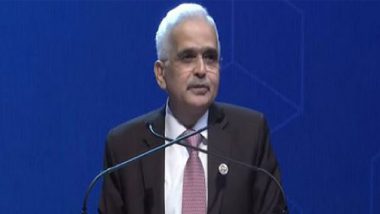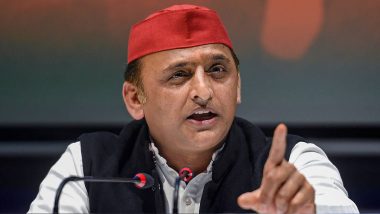New Delhi, Aug 30: A day after the Reserve Bank of India (RBI) report claimed that 99.3 per cent of the demonetised currency was deposited after the government declared them non-legal tender on November 8, Finance Minister Arun Jaitley defended the demonetisation drive, saying the goal was "certainly not" to invalidate the Rs 500 and Rs 1000-notes which were then in circulation. Narendra Modi Demonetisation Full Speech: What Prime Minister Said on November 8, 2016, While Announcing Rs 500 and Rs 1000 Currency Note Ban.
Jaitley, in a Facebook blog, said the aim of demonetisation was to formalise the economy and widen the tax net. He further claimed that India was no longer considered a non-tax compliant society after the shock demonetisation drive of the Prime Minister. Rahul Gandhi Calls Demonetisation a Scam, Says It Was Deliberate Attempt to Rob People.
As per the data presented by Jaitley, the Income Tax Returns increased by 19 per cent in year succeeding the demonetisation drive.
Read the full blog post written by Arun Jaitley:
The Reserve Bank has twice released its reports stating that the demonetised Notes of `500 and `1000 have been substantially deposited in the Banks. A widely stated comment has been that just because most of the currency came back into the Banks, the object of Demonetisation has not succeeded. Was the invalidation of the Non-deposited currency the only object of demonetisation? Certainly Not. The larger purpose of demonetisation was to move INDIA from a Tax Non-compliant society to a compliant society. This necessarily involved the formalisation of the Economy and a blow to the black money. How has this been achieved?
- WHEN cash is deposited in the Banks, the anonymity about the owner of the cash disappears. The deposited cash is now identified with its owner giving rise to an inquiry, whether the amount deposited is in consonance with the depositor’s income. Accordingly, post demonetisation about 1.8 million depositors have been identified for this enquiry. Many of them are being fastened with Tax and Penalties. Mere deposit of cash in a bank does not lead to a presumption that it is Tax paid Money.
- In March 2014, the number of Income Tax returns filed was 3.8 crores. In 2017-18, this figure has grown to 6.86 crores. In the last two years, when the impact of demonetisation and other steps is analysed, the Income Tax returns have increased by 19% and 25%. This is a phenomenal increase.
- The number of New Returns filed post demonetisation increased in the past two years by 85.51 Lakhs and 1.07 crores.
- For 2018-19, advance Tax in the first quarter has increased for personal Income Tax Assesses by 44.1% and in the Corporate Tax category by 17.4%.
- The Income Tax collections have increased from the 2013-14 figure of `6.38 Lakh crores to the 2017-18 figure of `10.02 Lakh crores.
- The growth of Income Tax collections in the Pre-demonetisation two years was 6.6% and 9%. Post-demonetisation, the collections increased by 15% and 18% in the next two years. The same trend is visible in the third year.
- The GST was implemented from 1st July, 2017 i.e. Post demonetisation. In the very first year, the number of registered assesses has increased by 72.5%. The original 66.17 Lakh assesses has increased to 114.17 Lakhs.
This is the positive impact of the Demonetisation. More formalisation of the Economy, More Money in the System, Higher Tax Revenue, Higher Expenditure, Higher Growth after the first two quarters.
(The above story first appeared on LatestLY on Aug 30, 2018 05:39 PM IST. For more news and updates on politics, world, sports, entertainment and lifestyle, log on to our website latestly.com).













 Quickly
Quickly




















